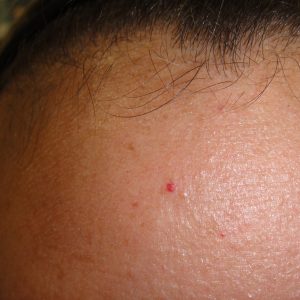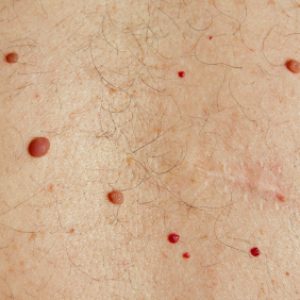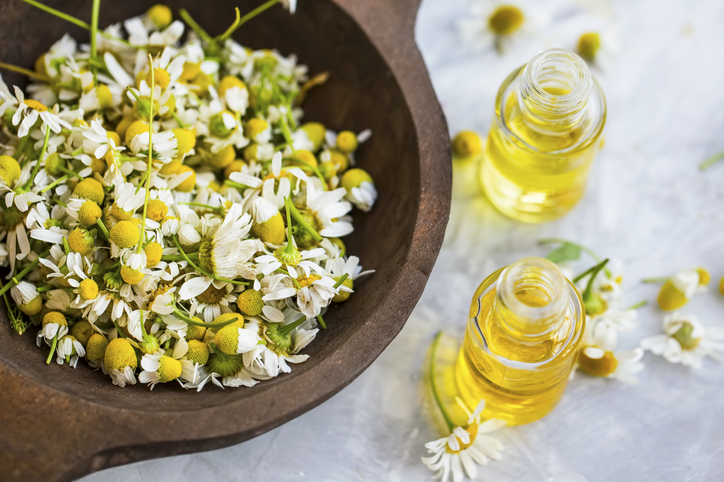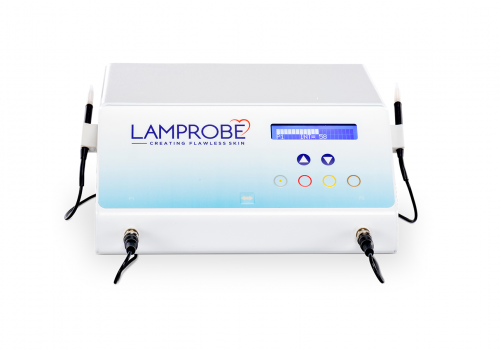CHERRY ANGIOMAS
In your practice
As specialized skin therapists, we know that our clients are increasingly seeking our advice for optimal treatment options in their pursuit of flawless skin. Social pressures and the need to appear “perfect” in social media images and now even online video meetings during our social distanced times, have only heightened many people’s awareness of their skin and perceived flaws.
Appearing as bright red or purple spots on the skin’s surface, cherry angiomas are one such noticeable minor skin flaw, falling under the Vascular category of Minor Skin Irregularities™. So even though cherry angiomas are a common superficial skin disorder and are not of concern medically, they can still be a cause of discomfort to many of your current and potential clients. In these instances, it is important that you are able to educate your clients about cherry angiomas and recommend an optimal treatment method to meet their needs.

What are cherry angiomas?
Cherry Angiomas, also known as senile angiomas or Campbell De Morgan spots, are common skin growths that are made up of a proliferation of endothelial cells, the cells which line the blood vessels. They are the result of noncancerous (benign) superficial capillary overgrowth or dilation. They appear as bright red dots (flat or raised) on the surface of the skin, hence the origin of their name ‘cherry”.
Cherry angiomas are part of the “angioma” family, which includes another common type of angiomas: spider angiomas. Spider angiomas are distinct from cherry angiomas by their characteristic appearance of thin blood vessels radiating from a central red dot leading to their name “spider”. Both types of angiomas are common Minor Skin Irregularities™ (MSI) that you will regularly encounter on your clients.
The appearance of cherry angiomas should not be a cause concern medically for your clients, as they are rarely harmful nor cause harm or discomfort. If they are accidentally cut or punctured, though, some bleeding from them may occur.
In certain rare instances, it is advisable for individuals to seek medical consultation for cherry angiomas, as they may be a symptom of an underlying disease. These circumstances include if a light red or purple circle or “halo” surround the cherry angiomas, if there is a distinct change in their appearance – whether their size, shape, or colour – or if there is a rapid multiplication of them within a short period of time.

Where do Cherry Angiomas appear?
Cherry angiomas tend to be located mainly on the torso, upper and lower extremities of your clients, appearing as dome shaped, bright red or sometimes purple or bluish papules. They are commonly found on the face, decolletage, and chest.
Cherry angiomas may vary in size, often ranging 0.1-1cm in diameter. They can range in shape from being circular to oval and may be flat or dome shaped. Multiple angiomas often appear in groups in one area, rather than on varying sections of the body.
What are the Contributing Causes of Cherry Angiomas?
The causes leading to the appearance of cherry angiomas are varied. The aging process is thought to play a central role, though, as cherry angiomas tend to increase in number as one ages, in particular past the age of 30 years. This is also true for all common Minor Skin Irregularities™ which tend to become more prevalent with age.
Beyond aging, we know that genetics also likely play a role in the emergence of cherry angiomas, as certain people seem to be more likely to get them if they are common in family members. Some genetic analysis has associated cherry angiomas with mutation in the genes GNAQ and GNA11 (Q209H). Certain medical conditions, such as diabetes and compromised liver health, may also make individuals more prone to this condition.
Hormones are also believed to contribute to the appearance of cherry angiomas as they can tend to appear on women soon after giving birth. This may be linked to the increase of the Prolactin hormone which is the hormone that stimulates breastmilk production.
Exposure to certain gases in the environment and chemicals such as bromine may also be linked to the occurrence of cherry angiomas in some individuals. Bromine, a chemical element present in many everyday objects: baking goods, plastic, prescription drugs, is theorized to be a factor in the formation of cherry angiomas, but the link has not been not be confirmed yet.
Lastly, lifestyle factors may also affect the emergence of cherry angiomas. As with many skin flaws and MSI, excessive exposure to the sun can be linked to their prevalence, as well as poor nutrition and unhealthy lifestyle habits. Poor nutrition, for example, may be linked to studies associating cherry angiomas with heightened cholesterols in individuals.

Best Practices on Preventing Cherry Angiomas
While there are no proven ways to prevent cherry angiomas, overall healthy lifestyle habits can be beneficial, including healthy eating practices, staying properly hydrated, and controlling stress levels. Avoiding alcohol and tobacco use, as well as regularly using sun protection is also recommended.
Regarding nutrition in particular, organic and unprocessed foods high on antioxidants are recommended, as well as the consummation of natural iodine-rich foods such as yogurts, prunes and strawberries, to protect the body and help rid of toxins which may deter the formation of angiomas.
Natural Treatments
While there is no medical necessity to have a cherry angioma treated, there are some natural remedies used traditionally for treating them for cosmetic reasons.
Iodine and tea tree oil have both been common ointments used for shrinking the size of cherry angiomas. These treatments generally need to be prepared and mixed with other substances and applied over a period of time to see results.
Chamomile, lavender and coconut oil are used as well to treat and improve overall skin conditions. Apple cider vinegar, in its pure fermented form, has been used to treat angiomas thanks to the presence of acetic acid. This active ingredient effectively cleans and tones the skin, preventing acne lesions and rashes.
These natural remedies generally require multiple treatments over a long period of time and the outcomes may not be consistent.


Traditional Clinical Treatments
There are a few cosmetic standard procedures for removing cherry angiomas.
The excision method involves the shaving off the angioma with a blade. These treatments usually require local anaesthetics due to pain and recovery time for healing and there is a risk of scarring post treatment.
Lasers using a concentrated beam of light to treat cherry angiomas. However, lasers are very powerful and can cause damage to the surrounding tissues. Usually more than one treatment session may be required and some bruising and discoloration may result.
In cryosurgery, liquid nitrogen can be used to freeze the angioma. The cherry angioma will freeze, then peel before falling off. This treatment can be less effective than others and can also leave a small mark on the skin.
Despite the possible drawbacks cited related to traditional professional treatments, clients should always be dissuaded from trying to remove cherry angiomas by themselves at home, due to risks of infection, pigmentation, and scarring.

LAMPROBE Treatments – Cherry Angiomas
As with most minor skin irregularities™, the LAMPROBE treatments can offer skin care practitioners a vastly easier, more effective, and more rapid treatment alternative to treating your clients’ cherry angiomas compared to other treatment options. Lasting only seconds and non-invasive in nature, LAMPROBE treatments will make your client’s cherry angiomas instantaneously disappear, to their delight.
The LAMPROBE is a radio frequency device that enables skin care practitioners to treat cherry angiomas – small and large – with extreme and targeted precison, thereby without affecting the surrounding skin. The cherry angioma is effectively vaporized by the energy emitted from the LAMPROBE’s probe. Your clients will only feel a light to medium sensation, that will last just seconds. Anesthesia, therefore, is not normally required.
LAMPROBE practitioners, known as LAMPROBERS, love the instant results that their LAMPROBE provides their clients. Like a “magic wand”, with the touch of the LAMPROBE, you can give your clients the immediate results they are looking for, as the cherry angioma disappears in a single treatment.
Conclusion
Cherry angiomas are a common but very treatable skin condition that skin practitioners can add to their service menu to meet their customers’ growing needs. Skin practitioners can also educate their clients’ on this common skin flaw and offer them guidance on preventative practices regarding them.
With greater understanding and modern non-invasive treatment options, such as the LAMPROBE, for them, cherry angiomas no longer have to be a source of stress or concern for your clients. They can trust you to take care of their skin and guide them to flawless results.
©2020 Lamskin
Posted in Vascular Minor Skin Irregularities™
Tagged advanced skin carebeauty therapistblood spotscherry angiomaesthetican educationestheticianesthetics educationlamprobemedspaminor skin irregularitiesplastic surgeryprofessional skin careskin careskin care techniquesskin care technologyskin deviceskin educationskin treatments



